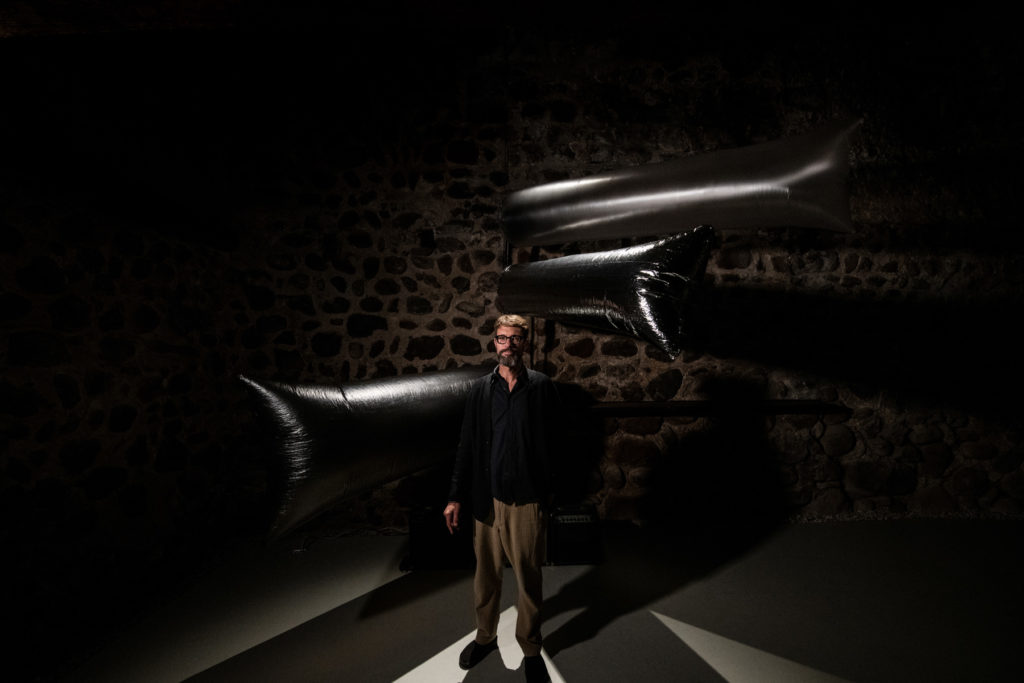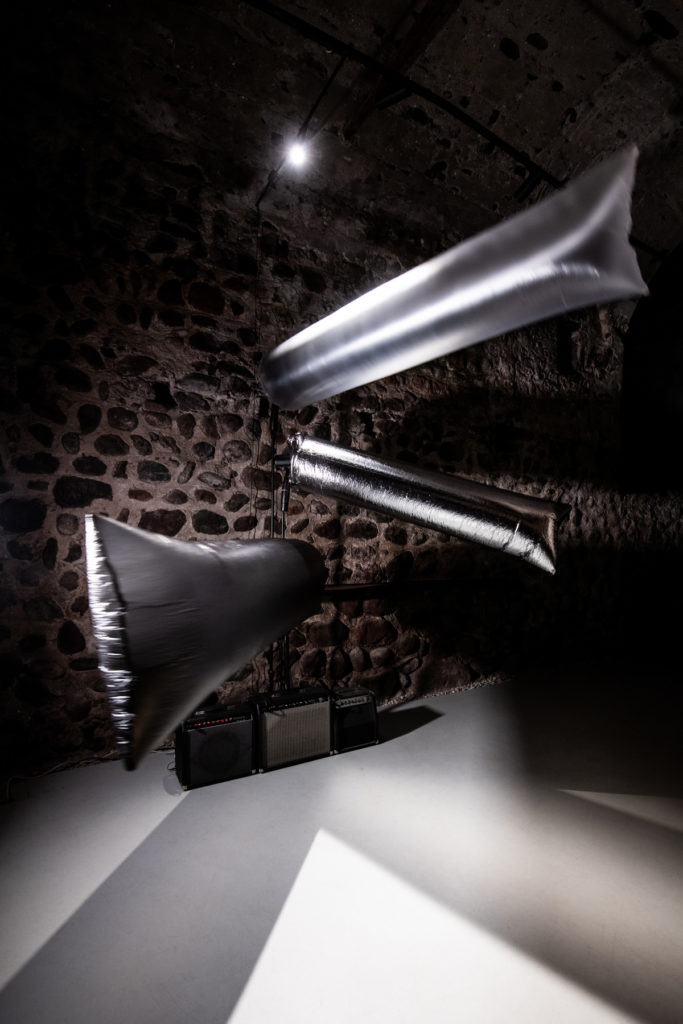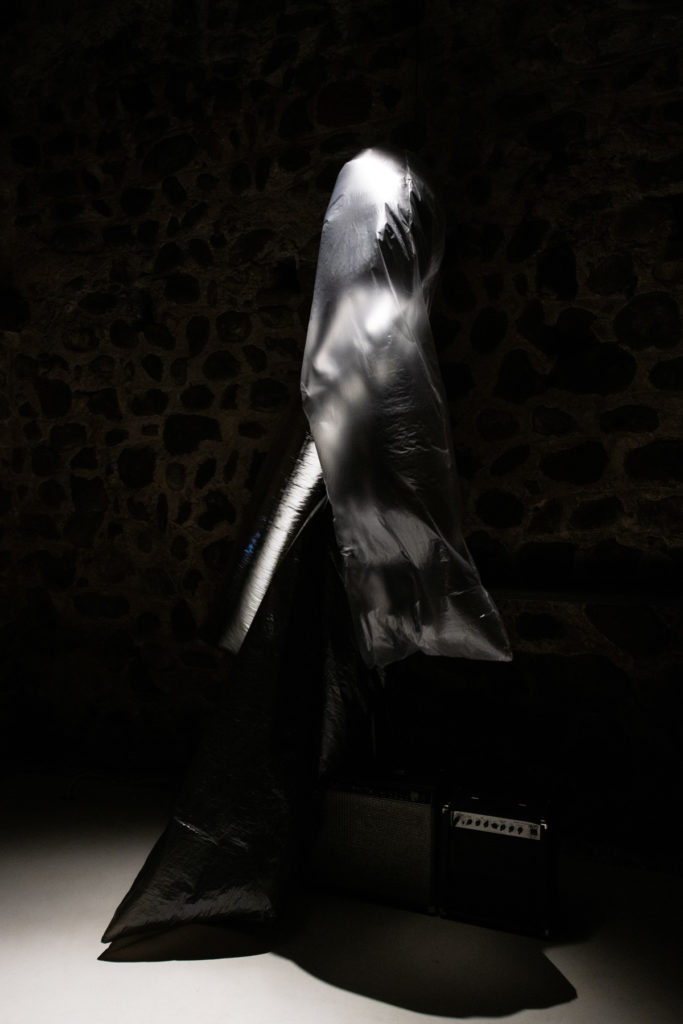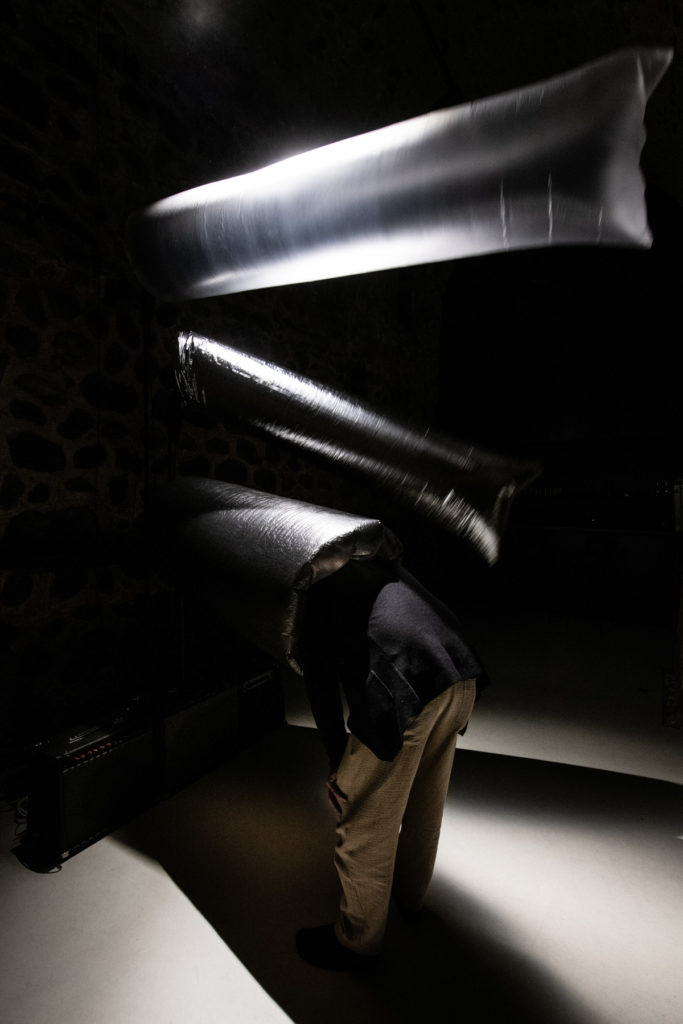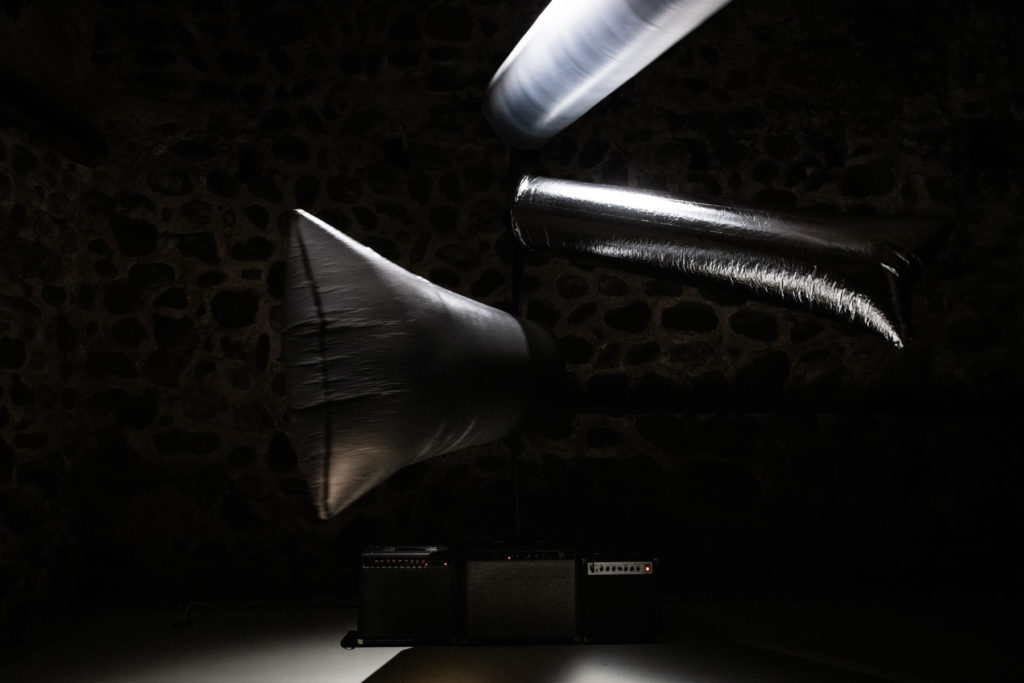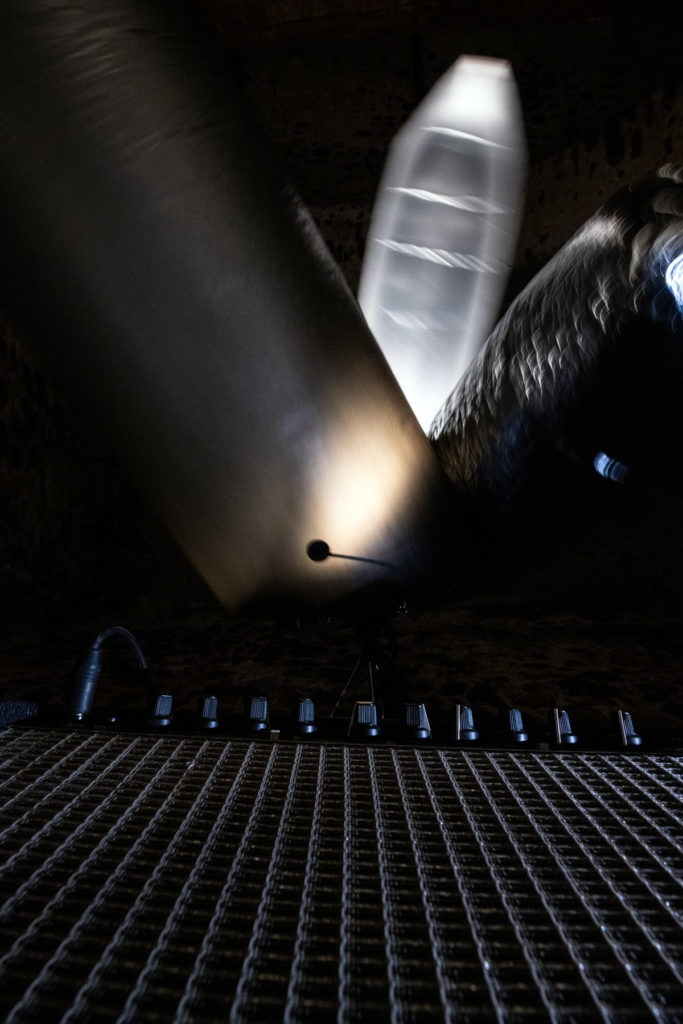Installation BAW22 Winner
Incipit
I wait for a train at night and walk along platform 5.
I am struck by the minimalism of the rubbish bin.
The bin itself has gone, only the bare bags remain, dangling ten centimetres above the ground.
Mounted on three round holders, one for each type: Paper, plastic and general waste.
White, blue, yellow.
The wind is blowing and the bags sway slightly and vibrate when the wind blows more. “Step away from the yellow line, goods train passing at platform 5”.
The moving air creates a choreography/soundtrack for bags that I still recall in every detail.
Concept
A memento mori that generates concrete music and smiles.
Giving form to the vital impulses that allow us to occupy a space in the world for a limited time and then the opposite condition, the phases of emptying, of silence, of immobility.
Expanding in time the passage of the goods train, or rather the visual and acoustic echoes of its passage.
To stage our existential dualisms through an analogue installation programmed using a digital system.
Research
The materials used for the installation perform a function opposite to their original application.
They are used improperly, to set air in motion, to capture it and give it form.
The oxymoron of the fan that does not move the air, the empty but full bags, estrange them from their original function, they elevate, they become something else.
They relate us to something greater than ourselves. The electric, oscillating sound of the fans generates a mantra that sounds strangely organic. Electro-acoustic yoga.
Their regularity lulls the gaze, which, hypnotised by the horizontal movements, searches for signals, codes to interpret, the fullness, the visible and palpable void.
The apparent strength of the inflated sacks seems not to be subject to the force of gravity, but this is only a temporary and illusory condition. It comes to an end when the fans turn off and irony supersedes the inflated balloons.
Modus operandi
Three handmade sacks made from emergency blankets, a thin black plastic sack (a thermal zeppelin), a 2x1m piece of semi-transparent painter’s cloth.
The resulting bags are attached to the blade guard of three fans that move 90 degrees horizontally, with magnets.
The system turns on, turns off, is electronically amplified, and finally plays unplugged. Visitors can caress the sacks and rest their ears on them, hinder their movements, but gently. Circumstances dictate the timing and the rules to be followed.
The three fan’s blade guards are equipped with contact microphones, connected to three guitar amplifiers that amplify the fans itself but also the contacts that may happen between the sacks and the visitors.
When the fans are switched off, the sacks deflate and lie on the ground causing a very light crackling sound, which lasts 30 to 40 seconds, then silence.
After a minute, the fans turn on again, the bags inflate and resume their cycle, they synchronise. Slowly the individuality of the different bags takes over and they lose synchrony.
.
.
Foto: Ivo Corrà
